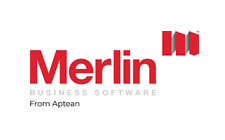Employee home-to-work travel costs during rail strike
To keep the impact of the recent London Underground strikes on your business to a minimum it offered to reimburse employees for the costs of travelling to work via other means. Does this create a taxable benefit in kind?

Commuting
There’s no doubt that it costs more to live and work in London, not least of all because of the cost of rail cards. Some larger employers even offer new employees a loan to cover the exorbitant amount. So, when this mode of transport isn’t available, many employees find it difficult to get to work, and if they can make it, it’s likely to be an expensive journey. Generally, the cost of travelling to and from your workplace isn’t tax deductible for an employee, and if the cost is paid for or reimbursed by their employer it ordinarily creates a taxable benefit in kind for the employee.
Tax exemption
As one might hope there are sensible exceptions to this rule. Where there’s a strike or other industrial action that causes disruption to public transport, a special exemption applies. This allows employers to meet the cost of their employees’ travel to and from work directly, or by reimbursement, free from income tax and NI. The exemption specifically covers industrial action, meaning additional travel costs where there is disruption due to road closures or the odd train cancellation won’t be exempt.
Note. The exemption only covers payments made by an employer. If an employee incurs extra costs but isn’t reimbursed, they aren’t entitled to a personal tax deduction
Overnight stays
The exemption also applies if the disruption to public transport means that an employee has to stay overnight and the employer pays or reimburses the cost of accommodation and subsistence. HMRC’s approach to this is that the exemption applies if the employee can’t “easily” commute. For example, they may be able to get in to work but can’t easily return home because of strike action.
Strikes
The exemption can apply to any situation where an employee’s commute is disrupted by a “strike or other industrial action”. This doesn’t have to be action directly taken by public transport workers. For example, the exemption would apply if an employee’s commute by bus was prevented because roads on their route were blocked due to a protest march by other striking workers.
How much disruption?
For the exemption to apply an employee’s usual commute by public transport must be “disrupted”. The rules don’t indicate how much disruption is required before the exemption can be used. It is understood that HMRC takes a pragmatic approach. For example, while some services may still run during a strike, that mode of transport is unlikely to be reliable and workers may have to leave for work before a journey has been formally cancelled. Therefore, it isn’t necessary to show that it would be completely impossible to travel to get the tax exemption.
Be clear with your staff on company policy for expenses incurred in these situations. Regardless of the tax treatment, any expense is a cost to the business, and the cost of travel, accommodation and subsistence for multiple employees may not always be worth it.
Related Topics
-
Government rushes through NI cap on pension salary sacrifice
The government has already drafted legislation to impose a £2,000 limit on NI exempt pension contributions under salary sacrifice arrangements. What else do we know?
-
Sneaky change is a blow for side hustles
With most of the media focused on the headline-grabbing announcements from the Budget, a read of the published small print reveals another change coming in 2029. It’s bad news if you are an employee with a side hustle, but what’s going on?
-
Dodging the 2027 IHT and pension changes
In a little over a year the inheritance tax (IHT) exemption for unused pension savings comes to an end. If you’re married or in a civil partnership, one simple step might save your estate thousands in IHT. What is it?







 This website uses both its own and third-party cookies to analyze our services and navigation on our website in order to improve its contents (analytical purposes: measure visits and sources of web traffic). The legal basis is the consent of the user, except in the case of basic cookies, which are essential to navigate this website.
This website uses both its own and third-party cookies to analyze our services and navigation on our website in order to improve its contents (analytical purposes: measure visits and sources of web traffic). The legal basis is the consent of the user, except in the case of basic cookies, which are essential to navigate this website.